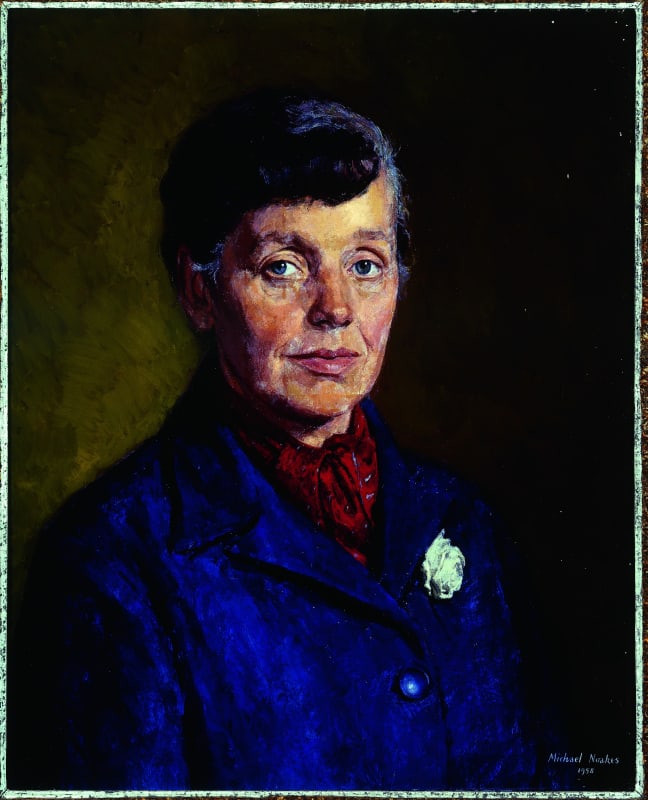Ruth Borchard & the origins of the COllection
Born near Hamburg in 1910, the writer Ruth Borchard came as a German-Jewish refugee to Britain in 1938. As ‘an enemy alien’ in wartime she was imprisoned first in Holloway Prison, then interned on the Isle of Man in 1940. In 1958 she refashioned a pre-war German diary to note names of British-based artists she intended to contact to create a collection of modern self-portraits. Between then and 1971 she collected 100 such works (setting a limit of 21 guineas for each picture) – from well known-artists such as Michael Ayrton, Anne Redpath and Keith Vaughan.
In addition to approaching well renowned, established artists Ruth sought out works from emerging avant-garde painters of note like William Crozier and Francis Newton Souza; and promising young artists early on in their career like Anthony Green, David Tindle and Anthony Whishaw. Ruth described this search for self-portraits as ‘dowsing for talent’, visiting many leading contemporary London galleries, both established and avant-garde, and the annual Young Contemporaries exhibitions - deliberately refraining from reading exhibition reviews - in her quest to find works showing a solid body of craftsmanship and singular honesty as well as expressing an emotive quality, the essential ‘cri de coeur’.
The collection shows a wide variety of artistic influences, including Camden Town, Expressionism, the Euston Road School, Art School Academicism, Kitchen Sink School, Art Brut, Scottish Colourism and Continental Existentialism. It offers a particular insight into the innovative influence of the painter David Bomberg , including founding members of the revolutionary Borough Group of painters, Leslie Marr, Cliff Holden and Dorothy Mead. Their self-portraits share a sublime intensity rare in a period whose art is sometimes characterised by an anaemic, academic air.
Only five of the hundred self-portraits are by women, yet their presence is strongly felt. Ruth did approach other female artists for self-portraits but none felt able to help. There is a wry, brusque note from Jean Cooke (signed Jean Bratby, then her married name) to Ruth, in which the artist agrees to receive a much lower price for her work than would normally be the case.
‘I am not a feminist but to have only 3 women painters out of 91[the tally to date] makes rather poor odds so 21 gns it is. Are you going to come and pick up the painting?’ (Jean Cooke nee Bratby).
Since most of the pictures were produced in the 1950s and 60s, they help evoke, in a heterogeneous and multi-faceted way, an entire period in British art, serving to explicate some of the myriad developments, strands and currents in painting at that time. Beyond this they also convey a sense of the mysterious paradoxes of identity. Through the alchemy of art the individual subjects transcend their mere mortal nature.
